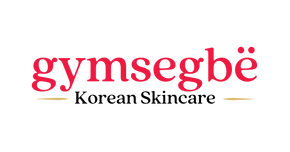Lactic Acid: Everything You Need to Know

Many skincare products contain ingredients that we don’t know anything about. Others are the hype of the moment, while some can be pretty scary (looking at you, acid). Even though acid is a scary word for some, when it comes to lactic acid, you shouldn’t be afraid at all. This AHA (alpha hydroxy acid) can make even the dullest, dryest, and even irritated skin a new, renewed look in a second.
What is lactic acid and how to use it? Where can you find it? We have answers to all these questions, and more! Read bellow.
What is Lactic Acid?
Lactic acid is one of the most popular AHAs. It is a very common ingredient in many skincare products. Naturally, lactic acid is found in dairy products. It is exactly the lactic acid that gives yogurt soured milk that distinctive taste. Did you know that Cleopatra loved to take milk baths? That is because people believe(d) that dairy products soften the skin and make it beautiful.

Benefits for The Skin
Lactic acid helps exfoliate and remove dead skin cells on the skin’s surface. However, it can also increase cell turnover, as well as collagen production. It draws moisture to the skin, which eventually can lead to less visible wrinkles and fine lines. As a result, you get a glowy, brighter complexion, as well as skin that is smooth and soft.
Lactic acid is widely popular due to two important benefits it brings to the skin. First, you can notice the results very early. The change is visible almost immediately if you use it daily. And second, it is one of the most gentle AHAs in the market, used in skincare products.
Unlike others acids, like glycolic or mandelic, lactic acid has extra benefits. It not only exfoliates the skin but also keeps it moisturized, by keeping it hydrated. The skin feels less dry and itchy.
Lactic acid can also help with sun or age spots on the skin. It is known for improving the look of fine lines and wrinkles too. It does that by boosting collagen production.
Side Effects of Lactic Acid
Even though lactic acid is gentle toward the skin, it can still have possible side effects. There are not many, but if you notice any of these, you can be sure they come as an effect of using lactic acid.
Skin Irritation
Skin irritations, including redness, dryness, burning, peeling, and itchy skin, can occur when you use lactic acid. If you feel mild redness or burning first thing when you apply lactic acid and the symptoms go an hour after, there is nothing to worry about.
However, if the itching, redness, or burning is moderate or even severe, and it doesn’t go after a while, you should wash the product away.
Sun Sensitivity
The most important thing to know about using lactic acid is that peeling makes your skin more likely to be damaged by the sun's rays. As the acid removes the dead skin cells, it makes the skin unprotected from ultraviolet light.
What can you do about it? Always use sunscreen that is SPF 30 or more daily. Even on cloudy days when you feel like there is no sun, make sure to apply SPF as the last step in your skincare routine.
Where to Look For Lactic Acid?
Products with lactic acid come in different concentrations. They usually vary from 5% to even 30%. Jumping right in the high percentage isn’t always a good idea though.
If you have never used lactic acid before, start with small concentrations, from 5-10%. Then you can aim for more, just let the skin get used to it. Always monitor your skin for irritations, and stick to the concentration that suits you.
You have a few options when it comes to lactic acid products.
Cleansers
If you need an easy way to incorporate lactic acid into your routine, choose cleansers. Use them just as regular cleansers, but avoid the delicate eye area. Lactic acid can potentially irritate eye lids, and leave that delicate skin flaky and dry. Since the cleanser is washed off it is suitable for sensitive skin.
Serums, Creams, and Lotions
Some of the most popular leave-in options are serums, creams, and lotions. They are usually used at night, so there is no danger of skin irritations and sunburn.
If you notice irritations after using these products, just make sure not to apply them every day. Make them part of your routine when your skin is adjusted.

Peels and Masks
A peel or a mask is designed to deliver a stronger dose of exfoliation. That is exactly what Perfect Trifecta acne peel will do. A great dose of glycolic and lactic acid will provide great exfoliation. At the same time, your skin will be renewed, without blackheads, and acne will be minimized.
















